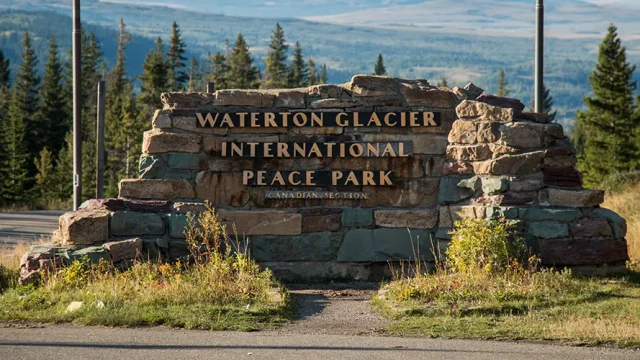
New research from walking holiday experts Inghams reveals the official DarkSky parks around the USA that are lesser known, but highly recommended by visitors.
Global search data, Google reviews, and AllTrails scores for over 122 DarkSky parks worldwide were analysed. The final rankings reflect which parks provide the best experience for stargazers. The locations with a low number of Google searches but super high review scores were shortlisted and ranked to reveal the lesser-known but best starry night experiences worldwide.
New research from Inghams shows that the best places to watch the celestial wonders of the night sky in the USA are Montana’s Glacier National Park, North Carolina’s Mayland Earth to Sky Park, and the UbarU Camp and Retreat Center in Texas.
Top 10 Best Starry Night Locations in the USA
| Rank | Dark Sky (Park) | State | Google Review Score | All Trails Score | Weighted Quality Score | |
| 1 | Waterton-Glacier International Peace Park | Montana | 4.9 | 4.8 | 94.1% | |
| 2 | Mayland Earth to Sky Park & Bare Dark Sky Observatory | North Carolina | 4.9 | 4.7 | 92.1% | |
| 3 | UbarU Camp and Retreat Center | Texas | 4.9 | 4.6 | 90.2% | |
| 4 | Pickett CCC Memorial State Park & Pogue Creek Canyon State Natural Area | Tennessee | 4.8 | 4.7 | 90.2% | |
| 5 | North Fork Park | Utah | 4.8 | 4.5 | 86.4% | |
| 6 | Flagstaff Area National Monuments | Arizona | 4.5 | 4.8 | 86.4% | |
| 7 | Pisgah Astronomical Research Institute | North Carolina | 4.5 | 4.7 | 84.6% | |
| 8 | Dr. T.K. Lawless County Park | Michigan | 4.5 | 4.6 | 82.8% | |
| 9 | AMC Maine Woods | Maine | 4.5 | 4.6 | 82.8% | |
| 10 | Rappahannock County Park | Virginia | 4.6 | 4.5 | 82.8% |
USA’s top six stargazing experiences
- Waterton-Glacier International Peace Park, Montana: With its snow-capped mountains, glaciers and stunning rugged rock formations, Waterton-Glacier International Peace Park combines Glacier National Park in Montana, and Waterton Lakes National Park in Canada. It’s a beautiful place to explore during daylight hours, as well as when the sun goes down. It’s been granted DarkSky status thanks to the prioritization of resources that protect and conserve its dark skies, and according to UNESCO it provides ‘outstanding scenery’ as well as being ‘exceptionally rich in plant and mammal species’. Waterton-Glacier International Peace Park tops the index of Best Starry Night Experiences with an impressive 4.9 stars on Google Business, and an AllTrails score of 4.8. Coupled with the fact that it remains fairly unknown in terms of Google search volumes, this DarkSky park offers a peaceful and unforgettable stargazing adventure.
- Mayland Earth to Sky Park & Bare Dark Sky Observatory, North Carolina: The Bare Dark Sky Observatory in North Carolina welcomes amateur astronomers to use their own telescopes within the flat areas of the park, as well as offering the public the use of the Observatory’s equipment, including a custom-built Newtonian telescope. With one of the highest Google review scores (4.9) but less than 500 Google searches a month, the Mayland Earth to Sky Park & Bare Dark Sky Observatory site shines as a hidden gem in the stargazing world.
- UbarU Camp and Retreat Center, TX, USA: Located in Gillespie County, Texas, the UbarU Camp and Retreat Center offers a spiritual and educational way to both connect with the nature and history of this area. Previously run by a Quaker community, the park is now operated by the Unitarian Universalist Friends Retreat Foundation who are committed to protecting the nature and wildlife that thrive under dark skies.
- Pickett CCC Memorial State Park & Pogue Creek Canyon State Natural Area, Tennessee: Pickett CCC Memorial State Park is found in the upper Cumberland Mountains of northern Tennessee and is going to great lengths to celebrate and make people aware of the importance of protected dark skies. This protected site offers a New Year’s Eve hike (what better way to see in the new year than by soaking up the stars above in a beautiful outdoor setting!) as well as a Junior Ranger Camp for the local community, and a regular programme of stargazing events during the summer months. It’s highly regarded by those who have visited with a score of 4.8 and 4.7 on Google Business and AllTrails respectively, and with just 1,300 online searches a month, it’s one of the lesser-known DarkSky locations around the world.
- North Fork Park, Utah: Home to Ogden Valley, North Fork Park is one of the most exciting places for mountain activities and adventures in the USA. Visitors can dabble in cross-country skiing and other Nordic snow activities in the winter, and in the summer the park offers camping, hiking trails, biking routes, volleyball and horse riding. With so many visitors, North Fork Park has been very proactive and innovative at outreaching its DarkSky program, making it accessible and easy for those who want to have a guided night sky experience, as well as helping those who wish to pursue and hone their stargazing skills on their own.
- Flagstaff Area National Monuments, Arizona: All of the sites that make up Flagstaff Area National Monuments (Wupatki, Walnut Canyon and Sunset Crater Volcano) have been granted DarkSky status thanks to each site’s efforts and collaboration with nearby city councils and land management agencies to create super effective city and country outdoor lighting codes. The result is that despite the proximity to urban areas, the skies in this part of Arizona are protected from excessive light pollution and provide a gateway to the incredible night skies for residents and visitors to Flagstaff.
Inghams’ study looked further afield to all of the DarkSky parks around the globe, as well as those in America. In the global rankings Wateron-Glacier International Peace Park, which lies across both Canada and the USA comes out as the world’s best underrated stargazing location. Mayland Earth to Sky Park takes 4th place in the global rankings, with UbarU Camp and Pickett CCC Memorial State Park also placing in the top ten. Other official DarkSky locations highlighted in the global research include Ainos National Park in Greece, South Korea’s Yeongyang Firefly Eco Park, and Hehuan Mountain in Taiwan.
Anne Williams, Director of Marketing at Inghams, comments:
“One of the best things about a walking holiday is being able to explore the world’s most beautiful landscapes during both daylight and nighttime hours. Mountains, valleys, lakes and forests come alive in the moonlight and without big city light pollution interfering, travelers can take the time to admire the celestial wonders above.
“The organisations and parks that are protecting and conserving our dark skies are doing an incredible job at preserving the natural wonders of our planet, however to keep our natural landscapes as unspoilt as possible, there are a few things we can all remember to do whilst exploring:
- Leave No Trace. The one rule to remember is to try and leave no trace when visiting natural trails or environments – this means taking everything you bring in back out with you, including food, wrappers, bottles and other waste.
- Stay On Designated Trails. In order to minimise soil erosion and damaging the environment surrounding trails, ensure you stick to established trails and paths – and avoid creating shortcuts or new trails.
- Don’t Take Souvenirs From Your Walk. In order to maintain environments and ecosystems as much as possible, never take souvenirs such as plants, flowers, berries, shells, rocks or animal parts. If you believe you’ve come across something of significance, leave it where you found it and report to the local authorities.”





